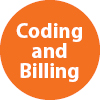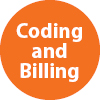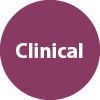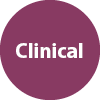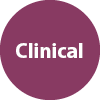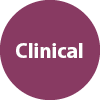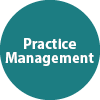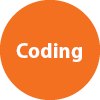
Catalog Advanced Search
-
Contains 7 Component(s), Includes Credits
The AAOMS Coding for Implants and Bone Grafts course is designed for OMSs and their professional staff to implement correct coding initiatives for reporting bone grafts and implants and apply these guidelines to real-life coding scenarios. This course will review processes for verifying coverage with payers, discuss stages of the digital workflow, provide coding tips using both CDT and CPT code sets and apply appropriate coding guidelines for procedures relating to bone grafting and implants. Code: BG25
The AAOMS Coding for Implants and Bone Grafts course is designed for OMSs and their professional staff to implement correct coding initiatives for reporting bone grafts and implants and apply these guidelines to real-life coding scenarios. This course will review processes for verifying coverage with payers, discuss stages of the digital workflow, provide coding tips using both CDT and CPT code sets and apply appropriate coding guidelines for procedures relating to bone grafting and implants.
Learning Objectives:
- Identify steps to determine patient benefits and recognize coverage parameters.
- Define bone graft and implant procedure codes, nomenclature and descriptors.
- Compare other separately reportable codes to be used in conjunction with bone graft and implant procedures.
- Discuss coding options for pre-procedural diagnostic services.
- Analyze real-life OMS coding scenarios while applying the appropriate codes for CDT and CPT.
Completion of this course requires current CPT and CDT coding books. You will need your CPT and CDT coding books to complete the clinical scenarios at the end of the course.
Please note:
- For optimal viewing, Chrome or Firefox are recommended browsers.
- You will have six months from the date of registration to complete the course. AAOMS will allow only one 30-day extension of a registrant’s access to an online coding course upon written request up to 10 days prior to expiration of access. Once an extension is granted, access will expire upon course completion OR at the end of the 30-day extension period.
- After completion of the final course quiz, participants will no longer have access to the course materials (i.e. handouts, videos, etc.)
- Registration fees for the courses are per person. Online courses cannot be taken as a group. A registration form must be submitted for each person taking the course. Usernames and passwords for the online courses may not be shared.
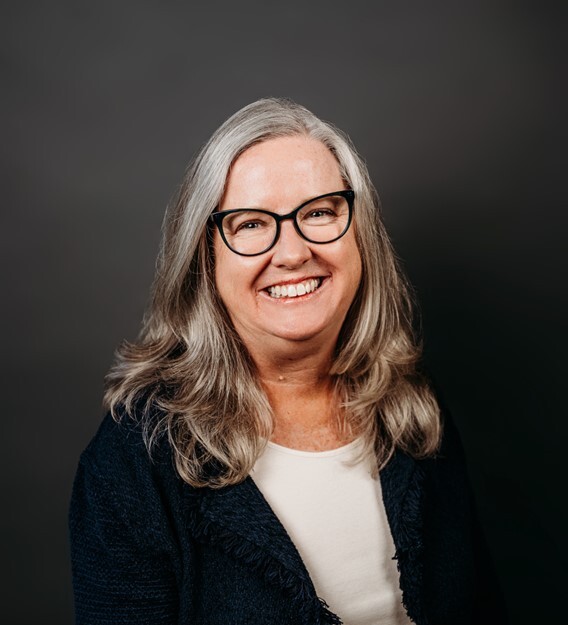
Terri Bradley, CPC
Terri Bradley is a certified coding professional and practice management consultant with over 30 years of experience in oral and maxillofacial surgery. She founded Terri Bradley Consulting 15 years ago and subsequently started OMS Billing Solutions. Most recently she co-founded OMS Powerhouse Consulting, which has clients nationwide, and she works with surgeons and their staff on billing and coding, practice management and systems implementation. Ms. Bradley has been published in the Dr. Raymond Fonseca Oral and Maxillofacial Surgery textbook, Dentistry IQ, and the 2017-2021 editions of the CDT Coding Companion, and she co-authored Dictations and Coding in Oral and Maxillofacial Surgery. Additionally, she is a member of AAPC and is one of the founding members of the JAWS Society (now known as the Society of OMS Administrators).
Disclosure: No Relevant Conflict of Interest Disclosures were reported.
Continuing Education Provider Approval
The American Association of Oral and Maxillofacial Surgeons is an ADA CERP Recognized Provider.ADA CERP is a service of the American Dental Association to assist dental professionals in identifying quality providers of continuing dental education.
ADA CERP does not approve or endorse individual courses or instructors, nor does it imply acceptance of credit hours by boards of dentistry.
The American Association of Oral and Maxillofacial Surgeons designates this activity for 3.0 continuing education credit(s).
AGD - Accepted Program Provider
FAGD/MAGD Credit
11/1/22-12/31/26
Provider ID# 214680The American Association of Oral and Maxillofacial Surgeons (AAOMS) is accredited by the Accreditation Council for Continuing Medical Education (ACCME) to provide continuing medical education for physicians.
The American Association of Oral and Maxillofacial Surgeons designates this internet-based enduring material for a maximum of 3.0 AMA PRA Category 1 Credit(s)™. Physicians should claim only the credit commensurate with the extent of their participation in the activity.
For AAPC credit, please contact the AAOMS Coding and Reimbursement Staff at (800) 822-6637.
-
You must log in to register
- Member - $200
- Resident Member - $75
- Allied Staff Member - $200
- Professional Staff Nonmember - $275
- Other Nonmember - $275
- More Information
-
Contains 15 Component(s), Includes Credits
This course provides education on Medicare programs and policies that impact oral and maxillofacial surgeons and their staff. This self-paced program includes discussions about Medicare components (Parts A, B, C and D), Medicare fraud and abuse, payment policies including Medicare dental coverage expansion, appeal processes and miscellaneous Medicare-related topics. There is a saying in healthcare – “as Medicare goes, so do the other carriers.” If time is taken to thoroughly learn the Medicare program, you will better understand your commercial payers, too. Code: MC25
This course provides education on Medicare programs and policies that impact oral and maxillofacial surgeons and their staff. This self-paced program includes discussions about Medicare components (Parts A, B, C and D), Medicare fraud and abuse, payment policies including Medicare dental coverage expansion, appeal processes and miscellaneous Medicare-related topics. There is a saying in healthcare – “as Medicare goes, so do the other carriers.” If time is taken to thoroughly learn the Medicare program, you will better understand your commercial payers, too.
Learning Objectives:
- Differentiate between Medicare Parts A, B, C and D.
- Identify actions prohibited by the False Claims Act (FSA), Anti-Kickback Statute and Physician Self-Referral Law (Stark Law).
- Explain Medicare’s enrollment options, including “opting out” of Medicare.
- Define the differences between fraud and abuse.
- Name provisions and penalties associated with Medicare fraud and abuse.
- Review how federal law, regulations and Medicare policies impact the oral and maxillofacial surgery practice.
- Discuss the general steps of the Medicare billing procedures and appeals process.
- Cite future alternate payment models.
Please note:
- For optimal viewing, Chrome or Firefox are recommended browsers.
- You will have six months from the date of registration to complete the course. AAOMS will allow only one 30-day extension of a registrant’s access to an online coding course upon written request up to 10 days prior to expiration of access. Once an extension is granted, access will expire upon course completion OR at the end of the 30-day extension period.
- After completion of the final course quiz, participants will no longer have access to the course materials (i.e. handouts, videos, etc.)
- Registration fees for the courses are per person. Online courses cannot be taken as a group. A registration form must be submitted for each person taking the course. Usernames and passwords for the online courses may not be shared.
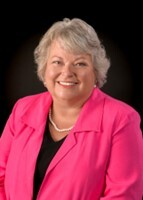
Dilaine Gloege, CDA, CPC
A certified dental assistant and certified professional coder, Dilaine Gloege founded Tidewater Dental Consulting where she educates dental teams on proper coding and billing practices through her speaking, writing and consulting. She has built a reputation for expertise in coding and insurance over her 37-year career in dentistry, including nearly seven years working with Practice Booster founder Dr. Charles Blair. This collaboration allowed her to contribute to developing essential coding and insurance resources for dental teams, including for publications such as the Insurance Solutions Newsletter and the guides “Coding with Confidence,” “Administration with Confidence” and “Medical Dental Cross Coding with Confidence.”
Disclosures: No relevant financial relationships were disclosed.
Continuing Education Provider Approval
The American Association of Oral and Maxillofacial Surgeons is an ADA CERP Recognized Provider.ADA CERP is a service of the American Dental Association to assist dental professionals in identifying quality providers of continuing dental education.
ADA CERP does not approve or endorse individual courses or instructors, nor does it imply acceptance of credit hours by boards of dentistry.
The American Association of Oral and Maxillofacial Surgeons designates this activity for 3.0 continuing education credit(s).
AGD - Accepted Program Provider
FAGD/MAGD Credit
11/1/22-12/31/26
Provider ID# 214680The American Association of Oral and Maxillofacial Surgeons (AAOMS) is accredited by the Accreditation Council for Continuing Medical Education (ACCME) to provide continuing medical education for physicians.
The American Association of Oral and Maxillofacial Surgeons designates this internet-based enduring material for a maximum of 3.0 AMA PRA Category 1 Credit(s)™. Physicians should claim only the credit commensurate with the extent of their participation in the activity.
For AAPC credit, please contact the AAOMS Coding and Reimbursement Staff at (800) 822-6637.
-
You must log in to register
- Member - $200
- Resident Member - $50
- Allied Staff Member - $200
- Professional Staff Nonmember - $275
- Other Nonmember - $275
- More Information
-
Contains 2 Component(s), Includes Credits Includes a Live Web Event on 08/13/2025 at 6:00 PM (CDT)
Dentoalveolar procedures are among the most common procedures performed by oral and maxillofacial surgeons. OMSs should be well-versed in the potential complications associated with these procedures, many of which can be avoided, and know how to address them effectively. Important factors in the prevention and management of dentoalveolar complications include a thorough history and physical examination of the patient, comprehensive surgical skills and knowledge of head and neck anatomy. This 60-minute webinar will review the published literature on dentoalveolar complications and discuss the prevention and treatment of these complications, including alveolar osteitis; displacement of tooth, root, implant or instrument; fracture of the jaw; hemorrhage; nerve injury; non-healing wounds; trismus and edema; and oroantral communication Code: WCE250813
Preventing and Managing Challenges in Dentoalveolar Surgery
Dentoalveolar procedures are among the most common procedures performed by oral and maxillofacial surgeons. OMSs should be well-versed in the potential complications associated with these procedures, many of which can be avoided, and know how to address them effectively. Important factors in the prevention and management of dentoalveolar complications include a thorough history and physical examination of the patient, comprehensive surgical skills and knowledge of head and neck anatomy. This 60-minute webinar will review the published literature on dentoalveolar complications and discuss the prevention and treatment of these complications, including alveolar osteitis; displacement of tooth, root, implant or instrument; fracture of the jaw; hemorrhage; nerve injury; non-healing wounds; trismus and edema; and oroantral communication.
Learning Objectives
At the conclusion of this program, participants should be able to:
- Identify the potential risks associated with various dentoalveolar surgical procedures and how to prevent them.
- Discuss the updates in the literature on the prevention and management of dentoalveolar complications.
- Describe how to manage complications associated with dentoalveolar surgery.
Cancellation Policy: Registrants will receive a full refund up until the day before the event. No refund will be given on the day of or after the event.
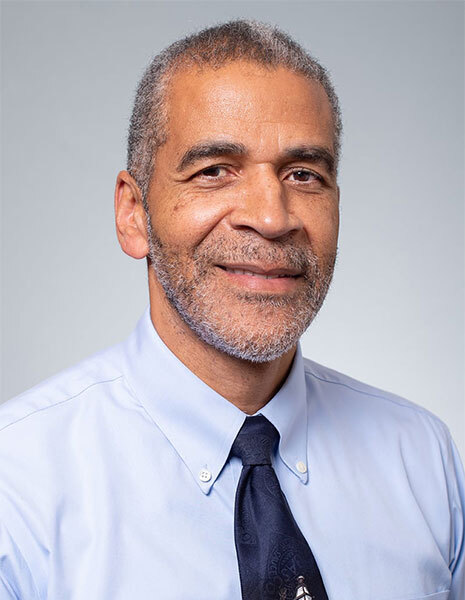
Patrick J. Louis, DDS, MD
Professor, University of Alabama School of Dentistry
Patrick J. Louis, DDS, MD, is the McCallum Endowed Professor and Chair of the Department of Oral and Maxillofacial Surgery at the University of Alabama at Birmingham (UAB) School of Dentistry. He earned his dental degree from Louisiana State University and completed both his medical degree and OMS residency at the UAB School of Medicine. Throughout his more than 30 years as faculty at UAB, he has mentored numerous residents and has actively contributed to advancements in the field, especially in TMJ and reconstructive surgery, through his many publications and lectures.
Continuing Education Provider Approval
The American Association of Oral and Maxillofacial Surgeons is an ADA CERP Recognized Provider.ADA CERP is a service of the American Dental Association to assist dental professionals in identifying quality providers of continuing dental education.
ADA CERP does not approve or endorse individual courses or instructors, nor does it imply acceptance of credit hours by boards of dentistry.
The American Association of Oral and Maxillofacial Surgeons designates this activity for 1.0 continuing education credit(s).
AGD - Accepted Program Provider
FAGD/MAGD Credit
11/1/22-12/31/26
Provider ID# 214680The American Association of Oral and Maxillofacial Surgeons (AAOMS) is accredited by the Accreditation Council for Continuing Medical Education (ACCME) to provide continuing medical education for physicians.
The American Association of Oral and Maxillofacial Surgeons designates this internet-based live activity for a maximum of 1.0 AMA PRA Category 1 Credit(s)™. Physicians should claim only the credit commensurate with the extent of their participation in the activity.
-
You must log in to register
- Member - $125
- Resident Member - Free!
- Allied Staff Member - $125
- Professional Staff Nonmember - $200
- Other Nonmember - $200
- More Information
-
Contains 2 Component(s), Includes Credits Includes a Live Web Event on 07/16/2025 at 6:00 PM (CDT)
This 60-minute webinar will discuss the importance of taking an effective pain-driven history, completing a comprehensive examination and maintaining a broad differential diagnosis when patients present with pain. It also will offer practical tips to help the clinician distinguish cervical, myogenous and intra-articular pain and dysfunction (IPD) and discuss in detail evidence-based guidelines for the management of IPD. Code: WCE250716
The Contemporary Management of Patients with Temporomandibular Joint Intra-articular Pain and Dysfunction (IPD)
This 60-minute webinar will discuss the importance of taking an effective pain-driven history, completing a comprehensive examination and maintaining a broad differential diagnosis when patients present with pain. It also will offer practical tips to help the clinician distinguish cervical, myogenous and intra-articular pain and dysfunction (IPD) and discuss in detail evidence-based guidelines for the management of IPD.
Learning Objectives
At the conclusion of this program, participants should be able to:
- Identify the pathophysiology of IPD.
- Examine the non-surgical strategies to manage IPD.
- Discuss the surgical options for treating IPD.
Cancellation Policy: Registrants will receive a full refund up until the day before the event. No refund will be given on the day of or after the event.
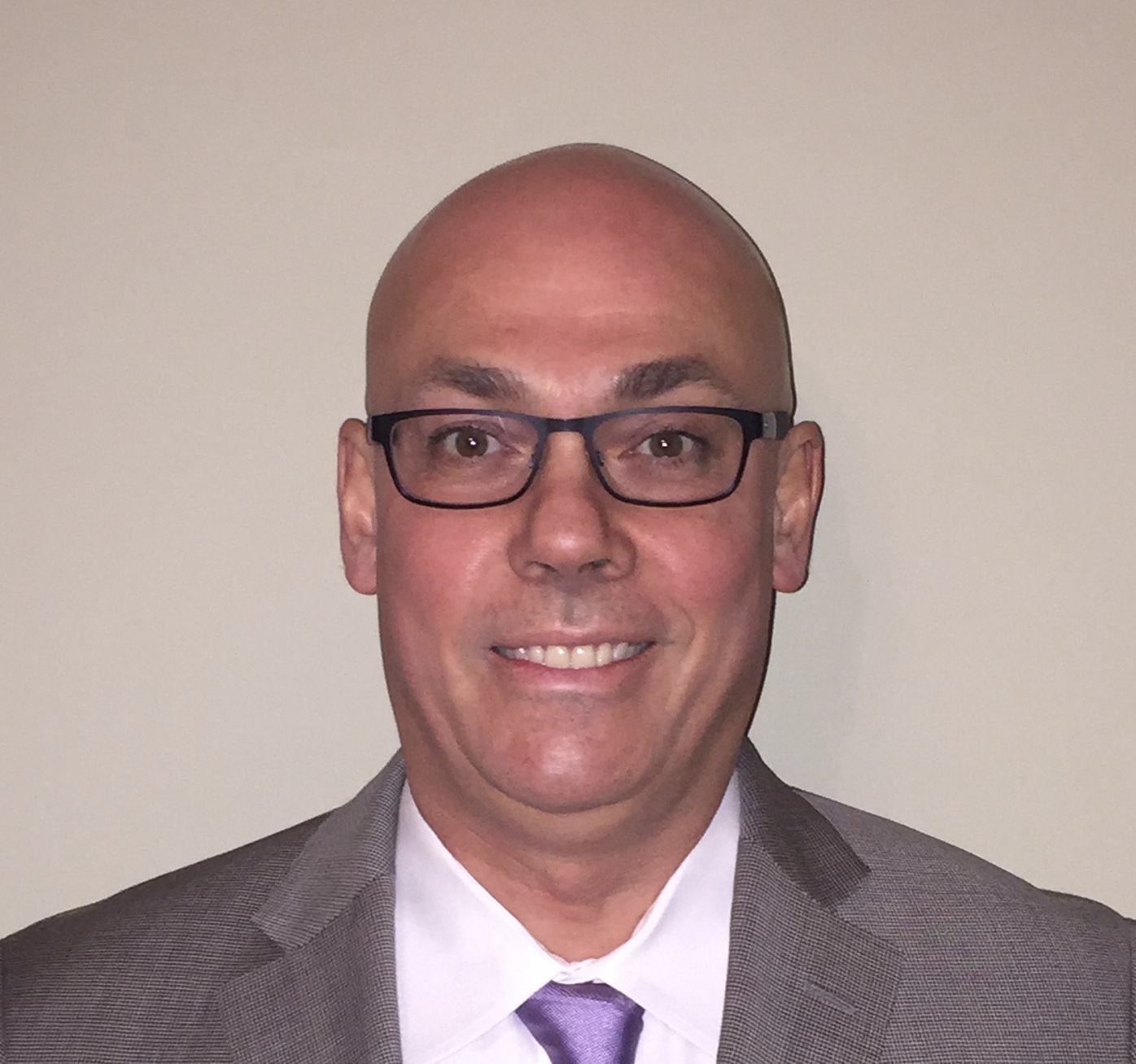
Gary F. Bouloux, MD, DDS, MDSc, FRACDS, FRACDS(OMS), FRCS(Eng), FACS
Professor and Chief, Division of Oral and Maxillofacial Surgery, Department of Surgery
Emory University School of Medicine
Gary F. Bouloux, DDS, MD, FRACDS, FRACDS(OMS), FRCS, MDSc, FACS, is the J David Allen Family Professor and Division Chief of the Division of Oral and Maxillofacial Surgery at Emory University School of Medicine. Dr. Bouloux is credited with introducing TMJ arthroscopy and total joint replacement for TMJ to Emory’s clinical services. His primary clinical interest is in improving surgical outcomes following arthrocentesis, arthroscopy, arthroplasty and total joint replacement for TMJ dysfunction.
Disclosure(s): No financial relationships were disclosed
Continuing Education Provider Approval
The American Association of Oral and Maxillofacial Surgeons is an ADA CERP Recognized Provider.ADA CERP is a service of the American Dental Association to assist dental professionals in identifying quality providers of continuing dental education.
ADA CERP does not approve or endorse individual courses or instructors, nor does it imply acceptance of credit hours by boards of dentistry.
The American Association of Oral and Maxillofacial Surgeons designates this activity for 1.0 continuing education credit(s).
AGD - Accepted Program Provider
FAGD/MAGD Credit
11/1/22-12/31/26
Provider ID# 214680The American Association of Oral and Maxillofacial Surgeons (AAOMS) is accredited by the Accreditation Council for Continuing Medical Education (ACCME) to provide continuing medical education for physicians.
The American Association of Oral and Maxillofacial Surgeons designates this internet-based live activity for a maximum of 1.0 AMA PRA Category 1 Credit(s)™. Physicians should claim only the credit commensurate with the extent of their participation in the activity.
-
You must log in to register
- Member - $125
- Resident Member - Free!
- Allied Staff Member - $125
- Professional Staff Nonmember - $200
- Other Nonmember - $200
- More Information
-
Contains 6 Component(s), Includes Credits
This 60-minute webinar will cover Enhanced Recovery After Surgery (ERAS) protocols, including multimodal approaches to facilitate recovery in the preoperative, intraoperative and postoperative periods. Attendees will learn about the history of ERAS protocol developments in surgery, why ERAS pathways are utilized and ERAS’s goals. Evidence-based ERAS literature in feminine and masculine faces will be discussed, in addition to interventions that can be implemented in all steps of the surgical process to enhance recovery. Code: WCE250527R
This 60-minute webinar will cover Enhanced Recovery After Surgery (ERAS) protocols, including multimodal approaches to facilitate recovery in the preoperative, intraoperative and postoperative periods. Attendees will learn about the history of ERAS protocol developments in surgery, why ERAS pathways are utilized and ERAS’s goals. Evidence-based ERAS literature in feminine and masculine faces will be discussed, in addition to interventions that can be implemented in all steps of the surgical process to enhance recovery.
Learning Objectives
At the conclusion of this program, participants should be able to:
- Discuss the concept of ERAS, the goals of implementation, the history of development and the nascent nature of ERAS in oral and maxillofacial surgery specifically.
- Describe the specific techniques in the preop, intraop and postop timeframes that may facilitate enhanced recovery.
- Identify OMS-specific literature on the topic of ERAS.
- Distinguish strategies that may be suitable for implementation inpatient surgeries.
- Identify how to implement ERAS techniques for use in outpatient or minor procedures.
An Internet-based CDE/CME Activity
Original Release Date: May 27, 2025
Expiration Date: May 27, 2028
Estimated time to complete this educational activity: 1.0 hour
Method of participation: Self-Study
Christopher F. Viozzi, DDS, MD
Consultant and Assistant Professor of Surgery
Mayo Clinic
Christopher F. Viozzi, DDS, MD, FACS, is an oral and maxillofacial surgeon with clinical interests and expertise in cleft lip and palate surgery, including alveolar cleft grafting, cleft orthognathic surgery and distraction osteogenesis; OSA including maxillomandibular advancement; complex orthognathic surgery; virtual surgical planning; and TMJ reconstruction. He earned a dental degree at Northwestern University and a medical degree at Medical College of Pennsylvania and completed both general surgery and OMS residencies at Allegheny General Hospital. Dr. Viozzi is active in surgical education and clinical research and mentors OMS residents as well as residents from other surgical specialties. He has served as an ABOMS Examination Committee Co-Chair and Chair of the AAOMS Clinical Interest Group on OSA.
Disclosures: No relevant financial disclosures.
Continuing Education Provider Approval
The American Association of Oral and Maxillofacial Surgeons is an ADA CERP Recognized Provider.ADA CERP is a service of the American Dental Association to assist dental professionals in identifying quality providers of continuing dental education.
ADA CERP does not approve or endorse individual courses or instructors, nor does it imply acceptance of credit hours by boards of dentistry.
The American Association of Oral and Maxillofacial Surgeons designates this activity for 1.0 continuing education credit(s).
AGD - Accepted Program Provider
FAGD/MAGD Credit
11/1/22-12/31/26
Provider ID# 214680The American Association of Oral and Maxillofacial Surgeons (AAOMS) is accredited by the Accreditation Council for Continuing Medical Education (ACCME) to provide continuing medical education for physicians.
The American Association of Oral and Maxillofacial Surgeons designates this internet-based enduring material for a maximum of 1.0 AMA PRA Category 1 Credit(s)™. Physicians should claim only the credit commensurate with the extent of their participation in the activity.
-
You must log in to register
- Member - $50
- Resident Member - Free!
- Allied Staff Member - $50
- Professional Staff Nonmember - $100
- Other Nonmember - $100
- More Information
-
Contains 6 Component(s), Includes Credits
This 60-minute webinar will focus on the role of orthognathic surgery in facial gender affirmation. Because orthognathic surgery at its core is based on gender norms, it can be considered a type of gender confirmation surgery for all patients. In transgender patients, the use of orthognathic surgery to sculpt more masculine or feminine facial features requires an understanding of specific surgical nuances and techniques. Attendees will learn about these orthognathic surgery techniques that enhance masculine and feminine facial features. Code: WCE250520R
This 60-minute webinar will focus on the role of orthognathic surgery in facial gender affirmation. Because orthognathic surgery at its core is based on gender norms, it can be considered a type of gender confirmation surgery for all patients. In transgender patients, the use of orthognathic surgery to sculpt more masculine or feminine facial features requires an understanding of specific surgical nuances and techniques. Attendees will learn about these orthognathic surgery techniques that enhance masculine and feminine facial features.
Learning Objectives
At the conclusion of this program, participants should be able to:
- Discuss how the population of transgender patients is relevant to surgeons specializing in orthognathic surgery.
- Describe midface characteristics of the feminine face.
- Integrate the use of virtual surgical planning and customized hardware to facilitate feminization of the face.
- Identify techniques to masculinize the mandible through orthognathic surgery and genioplasty techniques.
An Internet-based CDE/CME Activity
Original Release Date: May 20, 2025
Expiration Date: May 20, 2028
Estimated time to complete this educational activity: 1.0 hour
Method of participation: Self-StudyElda L. Fisher, DMD, MD, FACS
Elda L. Fisher, DMD, MD, FACS, is an Associate Professor of Surgery and Director of Facial Gender Affirmation Surgery at Duke University School of Medicine, specializing in facial esthetic surgery and gender affirmation surgery. She completed a residency at the University of North Carolina and a fellowship in full-body and facial esthetic surgery at The Ohio State University. She is board-certified in both oral and maxillofacial surgery and general cosmetic surgery. Currently, she is an officer of the AAOMS Clinical Interest Group on Cosmetic Surgery and an active member of the World Professional Association for Transgender Health. Dr. Fisher is committed to surgical education, serving as faculty of hands-on courses in cosmetic surgery, trauma surgery and facial feminization surgery, in addition to being an adjunct faculty in the department of oral and maxillofacial surgery at UNC.
Disclosures: Stryker Corporation (Speakers' Bureau and Consultant); N.A. Sorg (Speakers' Bureau); Johnson & Johnson (Speakers' Bureau)
Continuing Education Provider Approval
The American Association of Oral and Maxillofacial Surgeons is an ADA CERP Recognized Provider.ADA CERP is a service of the American Dental Association to assist dental professionals in identifying quality providers of continuing dental education.
ADA CERP does not approve or endorse individual courses or instructors, nor does it imply acceptance of credit hours by boards of dentistry.
The American Association of Oral and Maxillofacial Surgeons designates this activity for 1.0 continuing education credit(s).
AGD - Accepted Program Provider
FAGD/MAGD Credit
11/1/22-12/31/26
Provider ID# 214680The American Association of Oral and Maxillofacial Surgeons (AAOMS) is accredited by the Accreditation Council for Continuing Medical Education (ACCME) to provide continuing medical education for physicians.
The American Association of Oral and Maxillofacial Surgeons designates this internet-based enduring material for a maximum of 1.0 AMA PRA Category 1 Credit(s)™. Physicians should claim only the credit commensurate with the extent of their participation in the activity.
-
You must log in to register
- Member - $50
- Resident Member - Free!
- Allied Staff Member - $50
- Professional Staff Nonmember - $100
- Other Nonmember - $100
- More Information
-
Contains 6 Component(s), Includes Credits
This 90-minute webinar highlights the challenges oral and maxillofacial surgeons face with traditional inventory management, including overspending, wastage and last-minute orders. Attendees will gain strategies to streamline inventory processes, minimize wastage and ensure critical supplies are always available. Code: WPM250514R
This 90-minute webinar highlights the challenges oral and maxillofacial surgeons face with traditional inventory management, including overspending, wastage and last-minute orders. Attendees will gain strategies to streamline inventory processes, minimize wastage and ensure critical supplies are always available.
Learning Objectives
At the conclusion of this program, participants should be able to:
- Recognize the limitations and challenges associated with traditional inventory management methods in OMS practices, including the risks of overspending, wastage and last-minute ordering.
- Explain the best practices for inventory management as defined by industry guidelines, including the use of digital automated systems to improve accuracy, efficiency and cost-effectiveness.
- Demonstrate the ability to implement and utilize a digital inventory management system, including setting up automated alerts for low stock and expirations as well as integrating reordering processes.
- Apply strategies to optimize inventory management, reduce waste, manage recalls effectively and ensure compliance with the standard of care.
- Assess current inventory management practices, identify gaps in alignment with best practices and develop action plans to bridge these gaps.
An Internet-based CDE Activity
Original Release Date: May 14, 2025
Expiration Date: May 14, 2028
Estimated time to complete this educational activity: 1.5 hours
Method of participation: Self-Study
Paul Bhatti, DDS, MD
Paul Bhatti, DDS, MD, is an oral and maxillofacial surgeon and the CEO/Founder of Sowingo, a cloud-based inventory management platform partnered with AAOMS Advantage. He obtained his DDS from Northwestern University Dental School and his MD from Wayne State School of Medicine. Sowingo’s digital inventory management processes for dental and surgical practices offer tools to track supplies, optimize workflows and leverage real-time analytics.
Disclosure: Owner of Sowingo, Inventory Management Software
Continuing Education Provider Approval
The American Association of Oral and Maxillofacial Surgeons is an ADA CERP Recognized Provider.ADA CERP is a service of the American Dental Association to assist dental professionals in identifying quality providers of continuing dental education.
ADA CERP does not approve or endorse individual courses or instructors, nor does it imply acceptance of credit hours by boards of dentistry.
The American Association of Oral and Maxillofacial Surgeons designates this activity for 1.5 continuing education credit(s).
AGD - Accepted Program Provider
FAGD/MAGD Credit
11/1/22-12/31/26
Provider ID# 214680-
You must log in to register
- Member - $265
- Resident Member - $265
- Allied Staff Member - $265
- Professional Staff Nonmember - $265
- Other Nonmember - $265
- More Information
-
Contains 6 Component(s), Includes Credits
Gone are the days of a one-size-fits-all approach to NPO recommendations prior to an office-based This complimentary 60-minute webinar – presented jointly by AAOMS and the Intersocietal Accreditation Commission – will discuss the increased use of cone-beam computed tomography (CBCT) in dentistry that has resulted in a higher incidence of unanticipated radiographic findings. While some of these findings are significant and require intervention, others can be safely monitored or simply recognized as anatomical variations. This webinar will provide a practical framework for OMSs to confidently evaluate, classify and manage incidental findings identified on CBCT scans. Through case-based examples, participants will learn to rapidly triage incidental findings to identify pathoses and differentiate them from anatomic variants. Attendees also will review clinical decision-making strategies to effectively document and manage incidental findings. Code: WCE250429R
This complimentary 60-minute webinar – presented jointly by AAOMS and the Intersocietal Accreditation Commission – will discuss the increased use of cone-beam computed tomography (CBCT) in dentistry that has resulted in a higher incidence of unanticipated radiographic findings. While some of these findings are significant and require intervention, others can be safely monitored or simply recognized as anatomical variations. This webinar will provide a practical framework for OMSs to confidently evaluate, classify and manage incidental findings identified on CBCT scans. Through case-based examples, participants will learn to rapidly triage incidental findings to identify pathoses and differentiate them from anatomic variants. Attendees also will review clinical decision-making strategies to effectively document and manage incidental findings.
Learning Objectives
At the conclusion of this program, participants should be able to:
- Identify common incidental findings on CBCT scans.
- Develop a structured approach to triage incidental findings that require intervention, monitoring or no further management.
- Effectively communicate management plans to referring providers.
An Internet-based CDE/CME Activity
Original Release Date: April 29, 2025
Expiration Date: April 29, 2028
Estimated time to complete this educational activity: 1.0 hour
Method of participation: Self-StudyContinuing Education Provider Approval
The American Association of Oral and Maxillofacial Surgeons is an ADA CERP Recognized Provider.ADA CERP is a service of the American Dental Association to assist dental professionals in identifying quality providers of continuing dental education.
ADA CERP does not approve or endorse individual courses or instructors, nor does it imply acceptance of credit hours by boards of dentistry.
The American Association of Oral and Maxillofacial Surgeons designates this activity for 1.0 continuing education credit(s).
AGD - Accepted Program Provider
FAGD/MAGD Credit
11/1/22-12/31/26
Provider ID# 214680The American Association of Oral and Maxillofacial Surgeons (AAOMS) is accredited by the Accreditation Council for Continuing Medical Education (ACCME) to provide continuing medical education for physicians.
The American Association of Oral and Maxillofacial Surgeons designates this internet-based enduring material for a maximum of 1.0 AMA PRA Category 1 Credit(s)™. Physicians should claim only the credit commensurate with the extent of their participation in the activity.
-
You must log in to register
- Member - Free!
- Resident Member - Free!
- Allied Staff Member - Free!
- Professional Staff Nonmember - Free!
- Other Nonmember - Free!
- More Information
-
Contains 6 Component(s), Includes Credits
This 90-minute webinar is designed to prepare OMS team members to take on the roles of infection control coordinator and/or OSHA coordinator. Participants will receive tools such as an infection control and OSHA training checklist, an outline for conducting office infection control/OSHA safety meetings and guidance on selecting appropriate infection control products. The course covers how to conduct infection control audits and mock OSHA inspections as well as updating existing OSHA manuals, documentation, recordkeeping forms and safety data sheets. Checklists for building a personalized infection control policy manual and helpful resources for further education will be provided. Code: WPM250416R
This 90-minute webinar is designed to prepare OMS team members to take on the roles of infection control coordinator and/or OSHA coordinator. Participants will receive tools such as an infection control and OSHA training checklist, an outline for conducting office infection control/OSHA safety meetings and guidance on selecting appropriate infection control products. The course covers how to conduct infection control audits and mock OSHA inspections as well as updating existing OSHA manuals, documentation, recordkeeping forms and safety data sheets. Checklists for building a personalized infection control policy manual and helpful resources for further education will be provided.
Learning Objectives
At the conclusion of this program, participants should be able to:
- Describe the role of the infection control and/or OSHA coordinator for the OMS setting.
- Develop checklists for OSHA and infection control compliance.
- Plan and organize an infection control and safety meeting.
- Provide team training for the OMS setting that is memorable, engaging and fun.
- Protect the OMS practice and employees by providing up-to-date training.
An Internet-based CDE Activity
Original Release Date: April 16, 2025
Expiration Date: April 16, 2028
Estimated time to complete this educational activity: 1.5 hours
Method of participation: Self-Study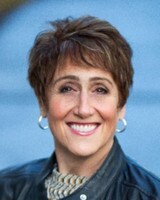
Leslie Canham, CDA, RDA, CDIPC, CSP
Leslie Canham, CDA, RDA, CDIPC, CSP, specializes in OSHA compliance, including infection control, HIPAA, dental board regulations, workplace violence prevention and accommodating deaf and hard-of-hearing patients. Her consultancy firm, Leslie Canham & Associates, LLC, has served dentistry for 25 years, providing in-office training, regulatory compliance audits, mock inspections, webinars and home study courses. She is a founding member of The Compliance Divas, a weekly podcast that helps dental professionals navigate regulatory compliance.
Disclosures: Agenics (research grant), Cambeo (writing honorarium), Farran Media (writing honorarium), Trapezio (writing honorarium), WasteWise (writing honorarium)
Continuing Education Provider Approval
The American Association of Oral and Maxillofacial Surgeons is an ADA CERP Recognized Provider.ADA CERP is a service of the American Dental Association to assist dental professionals in identifying quality providers of continuing dental education.
ADA CERP does not approve or endorse individual courses or instructors, nor does it imply acceptance of credit hours by boards of dentistry.
The American Association of Oral and Maxillofacial Surgeons designates this activity for 1.5 continuing education credit(s).
AGD - Accepted Program Provider
FAGD/MAGD Credit
11/1/22-12/31/26
Provider ID# 214680The American Association of Oral and Maxillofacial Surgeons (AAOMS) is accredited by the Accreditation Council for Continuing Medical Education (ACCME) to provide continuing medical education for physicians.
The American Association of Oral and Maxillofacial Surgeons designates this internet-based enduring material for a maximum of 1.5 AMA PRA Category 1 Credit(s)™. Physicians should claim only the credit commensurate with the extent of their participation in the activity.
-
You must log in to register
- Member - $265
- Resident Member - $265
- Allied Staff Member - $265
- Professional Staff Nonmember - $265
- Other Nonmember - $265
- More Information
-
Contains 6 Component(s), Includes Credits
OMS practices often struggle with revenue leakage – the loss of income due to inefficiencies or errors. This 90-minute webinar will explore the unseen or overlooked areas where potential earnings slip through the cracks and impact a practice’s bottom line, including ineffective billing processes and coding errors. Participants of this interactive session will learn real-world examples, best practice tips and practical strategies to equip OMSs and their administrative teams with the knowledge and tools necessary to identify, analyze and address revenue leakage. Focus also will be given on how to conduct a thorough audit of an OMS practice’s revenue cycle processes, pinpoint areas of potential revenue leakage and implement proactive measures to prevent unnecessary financial losses. Code: WCW250409R
OMS practices often struggle with revenue leakage – the loss of income due to inefficiencies or errors. This 90-minute webinar will explore the unseen or overlooked areas where potential earnings slip through the cracks and impact a practice’s bottom line, including ineffective billing processes and coding errors. Participants of this interactive session will learn real-world examples, best practice tips and practical strategies to equip OMSs and their administrative teams with the knowledge and tools necessary to identify, analyze and address revenue leakage. Focus also will be given on how to conduct a thorough audit of an OMS practice’s revenue cycle processes, pinpoint areas of potential revenue leakage and implement proactive measures to prevent unnecessary financial losses.
Learning Objectives
At the conclusion of this program, participants should be able to:
- Discuss the most common examples of revenue leakage in an OMS practice.
- Identify examples of coding and billing errors that lead to loss of revenue.
- Demonstrate the power of an effective auditing and monitoring program.
- Describe effective strategies to overcome revenue leakage.
An Internet-based CDE Activity
Original Release Date: April 9, 2025
Expiration Date: April 9, 2028
Estimated time to complete this educational activity: 1.5 hours
Method of participation: Self-Study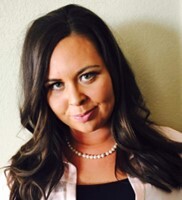
Toni Elhoms, CPC, CPMA, CRC, CEMA, CCS
Toni Elhoms, CPC, CPMA, CRC, CEMA, CCS, is a nationally recognized expert in medical coding, reimbursement and revenue cycle management. As the founder and CEO of Alpha Coding Experts, LLC, she holds multiple credentials from the American Health Information Management Association (AHIMA) and the American Academy of Professional Coders (AAPC).
Disclosures: No Relevant Conflict of Interest Disclosures were reported.
Continuing Education Provider Approval
The American Association of Oral and Maxillofacial Surgeons is an ADA CERP Recognized Provider.ADA CERP is a service of the American Dental Association to assist dental professionals in identifying quality providers of continuing dental education.
ADA CERP does not approve or endorse individual courses or instructors, nor does it imply acceptance of credit hours by boards of dentistry.
The American Association of Oral and Maxillofacial Surgeons designates this activity for 1.5 continuing education credit(s).
AGD - Accepted Program Provider
FAGD/MAGD Credit
11/1/22-12/31/26
Provider ID# 214680-
You must log in to register
- Member - $265
- Resident Member - $265
- Allied Staff Member - $265
- Professional Staff Nonmember - $265
- Other Nonmember - $265
- More Information


